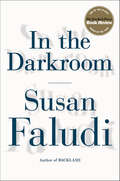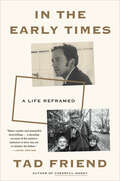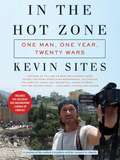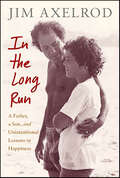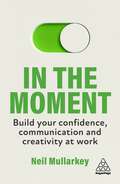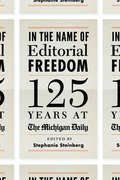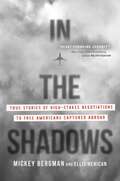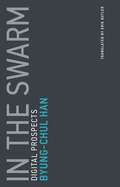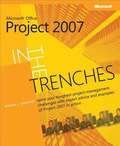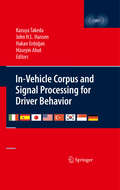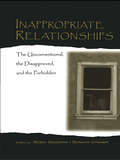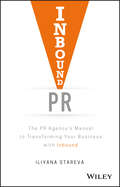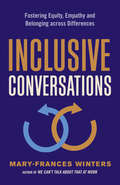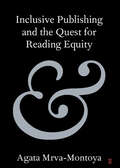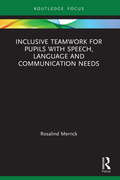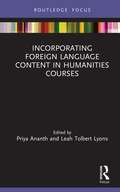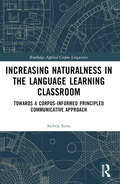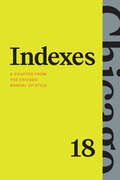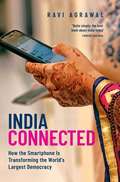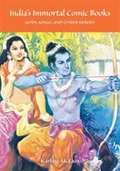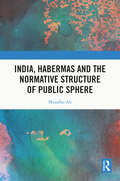- Table View
- List View
In the Darkroom
by Susan FaludiA Pulitzer Prize winner’s memoir of her search for her enigmatic father is “an absolute stunner . . . probing, steel-nerved, moving in ways you’d never expect” (New York Times).“In the summer of 2004 I set out to investigate someone I scarcely knew, my father. The project began with a grievance, the grievance of a daughter whose parent had absconded from her life. I was in pursuit of a scofflaw, an artful dodger who had skipped out on so many things—obligation, affection, culpability, contrition. I was preparing an indictment, amassing discovery for a trial. But somewhere along the line, the prosecutor became a witness.”So begins Susan Faludi’s extraordinary inquiry. When the feminist writer learned that her 76-year-old father—long estranged and living in Hungary—had undergone sex reassignment surgery, her investigation turned personal and urgent. How was this new parent who identified as “a complete woman now” connected to the silent, explosive, and ultimately violent father she had known?Faludi chases that mystery into the recesses of her suburban childhood and her father’s many previous incarnations: American dad, Alpine mountaineer, swashbuckling adventurer in the Amazon outback, Jewish fugitive in Holocaust Budapest. Her struggle to come to grips with her father’s metamorphosis takes her across borders—historical, political, religious, sexual—to bring her face to face with the question of the age: Is identity something you “choose,” or is it the very thing you can’t escape?“Riveting . . . Ms. Faludi unfolds her father’s story like the plot of a detective novel.” —Wall Street Journal“Penetrating and lucid . . . rich [and] arresting.” —New York Times Book Review“A gripping exploration of sexual, national, and ethnic identity.” —Kirkus Reviews, starred review
In the Early Times: A Life Reframed
by Tad FriendIn this &“dazzling&” (John Irving) memoir, acclaimed New Yorker staff writer Tad Friend reflects on the pressures of middle age, exploring his relationship with his dying father as he raises two children of his own. &“How often does a memoir build to a stomach-churning, I-can&’t-breathe climax in its final pages? . . . Brilliant, intensely moving.&”—William Finnegan, Pulitzer Prize–winning author of Barbarian DaysAlmost everyone yearns to know their parents more thoroughly before they die, to solve some of those lifelong mysteries. Maybe, just maybe, those answers will help you live your own life. But life doesn&’t stop to wait. In his fifties, New Yorker writer Tad Friend is grappling with being a husband and a father as he tries to grasp who he is as a son. Torn between two families, he careens between two stages in life. On some days he feels vigorous, on the brink of greatness when he plays tournament squash. On others, he feels distinctly weary, troubled by his distance from millennial sensibilities or by his own face in the mirror, by a grimace that&’s so like his father&’s.His father, an erudite historian and the former president of Swarthmore College, has long been gregarious and charming with strangers yet cerebral with his children. Tad writes that &“trying to reach him always felt like ice fishing.&” Yet now Tad&’s father, known to his family as Day, seems concerned chiefly with the flavor of ice cream in his bowl and, when pushed, interested only in reconsidering his view of Franklin Roosevelt.Then Tad finds his father&’s journal, a trove of passionate confessions that reveals a man entirely different from the exasperatingly logical father Day was so determined to be. It turns out that Tad has been self-destructing in the same way Day has—a secret each has kept from everyone, even themselves. These discoveries make Tad reconsider his own role, as a father, as a husband, and as a son. But is it too late for both of them?Witty, searching, and profound, In the Early Times is an enduring meditation on the shifting tides of memory and the unsteady pillars on which every family rests.
In the Hot Zone
by Kevin SitesKevin Sites is a man on a mission. Venturing alone into the dark heart of war, armed with just a video camera, a digital camera, a laptop, and a satellite modem, the award-winning journalist covered virtually every major global hot spot as the first Internet correspondent for Yahoo! News. Beginning his journey with the anarchic chaos of Somalia in September 2005 and ending with the Israeli-Hezbollah war in the summer of 2006, Sites talks with rebels and government troops, child soldiers and child brides, and features the people on every side, including those caught in the cross fire. His honest reporting helps destroy the myths of war by putting a human face on war's inhumanity. Personally, Sites will come to discover that the greatest danger he faces may not be from bombs and bullets, but from the unsettling power of the truth.
In the Interest of Justice: Great Opening and Closing Arguments of the Last 100 Years
by Joel J. SeidemannThis rich and rewarding volume collects more than two dozen of the most memorable opening and closing arguments made by top prosecutors and defense attorneys of the last one hundred years. Carefully selected to explore every major aspect and challenge of the legal process, these speeches highlight the tactics and strategies, colorful language, and stirring rhetoric that lawyers use to win judge and jury to their side. With a shrewd eye for courtroom stratagems and a keen understanding of the social currents that shape them, Manhattan assistant district attorney Joel Seidemann introduces and illuminates each speech from an insider's perspective. Arguments from landmark trials are included to reveal the smartest tricks of the trial lawyer's trade and demonstrate the power of an impassioned presentation to tip the scales toward the fulfillment of justice.
In the Long Run: A Father, a Son, and Unintentional Lessons in Happiness
by Jim AxelrodIt's 2008. Jim Axelrod—once among the most watched correspondents on network news and the first television reporter to broadcast from Saddam International Airport in 2003—is covering the final stages of the race for the Democratic presidential nomination. He's forty-five years old and thirty pounds overweight. He's drinking too much, sleeping too little, and scarcely seeing his family. He's just figured out that the industry that pulled him up the corporate ladder is imploding as he's reaching for its final rungs. Then, out of the blue, Jim discovers his late father's decades-old New York Marathon finish times. At forty-six, Bob Axelrod ran a 3:29:58. With everything else going on in his life, Jim sets himself a defining challenge: "Can I beat him?"So begins a deeply felt, often hilarious, quixotic effort to run the 2009 New York Marathon. Along the way, Jim confronts his listing marriage, a career upset by the seismic changes going on throughout the television news industry, excruciatingly painful shin splints, and the worst-timed kidney stone possible. Looming over it all is the shadow of a loving father, who repeatedly lost his way in life but still has a lesson to impart.This is a book about a dead father's challenge to a son at a crossroads, but, more than that, it is about the personal costs paid when ambition and talent are not enough to ensure success. Most fundamentally, though, it is a book about learning what it takes to be happy in your own skin.
In the Moment: Build Your Confidence, Communication and Creativity at Work
by Neil MullarkeyThere are moments throughout our lives when our confidence and creativity can make all the difference. Discover how to transform your career and grow your network by finding success In The Moment.Every meeting, presentation and conversation is an opportunity to embrace your confidence and show your creative flair. With insights on collaboration, risk-taking and organization, this book arms you with a complete repertoire of powerful communication tricks and strategies. As both a communication expert and a renowned comedian, Neil Mullarkey is uniquely qualified to demonstrate how you can develop your creativity, communication and confidence in your professional life. With incisive case studies and witty observations, In the Moment is an engaging and illuminating guide to success.
In the Name of Editorial Freedom: 125 Years at the Michigan Daily
by Stephanie SteinbergAt a time when daily print newspapers across the country are failing, the Michigan Daily continues to thrive. Completely operated by students of the University of Michigan, the paper was founded in 1890 and covers national and international news topics ranging from politics to sports to entertainment. The Daily has been a vital part of the college experience for countless UM students, none more so than those who staffed the paper as editors, writers, and photographers over the years. Many of these Daily alumni are now award-winning journalists who work for the premier news outlets in the world. In the Name of Editorial Freedom, titled after the paper's longstanding masthead, compiles original essays by some of the best-known Daily alumni about their time on staff. For example Dan Okrent, first public editor of the New York Times, discusses traveling with a cohort of Daily reporters to cover the explosive 1968 Democratic National Convention in Chicago. Rebecca Blumenstein, deputy editor-in-chief of the Wall Street Journal, and author Alan Paul talk about the intensity of the Daily newsroom and the lasting relationships it forged. Adam Schefter of ESPN recalls his awkward first story that nevertheless set him on the path to become the ultimate NFL insider. The essays of this book offer a glimpse, as activist Tom Hayden writes, at the Daily's impressive role covering historic events and how those stories molded the lives of the students who reported them. "They say a newspaper is a daily miracle. If that's so, The Michigan Daily is something beyond that, with the whole operation run by a bunch of sleep-deprived 20-year olds. What could go wrong? Here, Daily alums share their mistakes freely, weaving their stories through a half-century of American history with wit and wisdom--much of it hard-earned--but also justifiable pride in their idealism, their dedication, and the seriousness of the work they did while mere undergraduates. For all they've accomplished since their Daily days, you get the feeling they'd trade it all for another year at 420 Maynard--and you understand why." --John U. Bacon, bestselling author of Three and Out: Rich Rodriguez and the Michigan Wolverines in the Crucible of College Football and Endzone: The Rise, Fall, and Return of Michigan Football "I cannot imagine a better way to celebrate 125 years of student journalism than the essays contained in this wonderful volume. Going back some 55 years, the authors, all of whom are successful in their craft, have fashioned for us a unique window into the lives of students at the University of Michigan. Their stories are powerful and remind us of the magic of this place where students both are challenged and challenge others daily to change the world for the better." --Mary Sue Coleman, President Emerita at the University of Michigan "This book provides a truly wonderful collection of essays by alumni of the Michigan Daily, one of the nation's leading college newspapers, concerning their experiences as students covering some of the most important moments in the history of our university, the nation, and the world. Since many of these Michigan Daily alumni have gone on to important careers in American journalism, their fascinating perspectives provide strong evidence of the educational power of such student extracurricular experiences." --James J. Duderstadt, President Emeritus at the University of Michigan
In the Shadows: True Stories of High-Stakes Negotiations to Free Americans Captured Abroad
by Ellis Henican Mickey BergmanA top negotiator in countless high-stakes missions to free Americans captured abroad and held in the world's scariest prisons takes readers inside the dramatic and shadowy world of international hostage rescue. Brittney Griner, Danny Fenster, Otto Warmbier, Trevor Reed, Paul Whelan, Kenneth Bae…When an American citizen is unjustly imprisoned overseas, that&’s when Mickey Bergman&’s phone starts to ring. Who else are their desperate loved ones supposed to call? Mickey and his tight team of savvy negotiators at the Richardson Center for Global Engagement are the go-to rescuers of last resort, carrying on the high-stakes, round-the-world mission of master negotiator Bill Richardson. Mickey and his team do what U.S. government officials are often unable or unwilling to do: sit down with America&’s toughest adversaries and find creative ways to bring our people home. That's life In the Shadows. This is the heart-pounding story of these urgent negotiations, what it&’s like to climb inside the minds of some of the world&’s most notorious strongmen, where the clear divisions between good and evil are replaced by a thousand shades of gray. The hard work is done far from the glare of media publicity. The negotiations don&’t follow traditional diplomatic rules. As innocent Americans sit behind bars in hellhole foreign prisons, Mickey and his colleagues stop at nothing to get our people home. And these cases almost never go as smoothly as they should, as the independent negotiators navigate between U.S. government officials and some of the world&’s most headstrong leaders. And as soon as one American is freed, Mickey is off on another dicey mission to Moscow, Caracas, Naypyidaw, Pyongyang, or some other complex foreign capital. These painstaking campaigns require creative thinking, hardball pressure tactics, excruciating patience, and a genuine sense of compassion for the anxious families whose lives are thrown into turmoil when a loved one is imprisoned abroad. In Mickey Bergman's own words, In the Shadows tells the hidden story of these high-drama rescue campaigns. The crafty negotiating strategies. The strong-willed foreign leaders. The emotional rollercoaster of being responsible for innocent American lives. The exhilaration when another American is released from a foreign prison—and the terrible letdown when a promising effort hits another maddening roadblock. Mickey recounts his unique relationship with his mentor, the late, great Richardson, the former governor of New Mexico, ambassador to the United Nations and legendary negotiator. He shares the wrenching closeness he develops with the desperate families he serves, who often have nowhere else to turn. He offers a detailed account of his one-on-one interactions with Washington&’s top power players, both Democrats and Republicans, and some of the world&’s most isolated and misunderstood heads of state. For readers who want the full, searing story of these life-or-death rescue missions and the fascinating people behind them, it&’s all In the Shadows. As Mickey Bergman and New York Times bestselling author Ellis Henican make clear on every page, international diplomacy isn&’t just for government officials anymore.
In the Swarm: Digital Prospects (Untimely Meditations #3)
by Byung-Chul HanA prominent German thinker argues that—contrary to “Twitter Revolution” cheerleading—digital communication is destroying political discourse and political action. The shitstorm represents an authentic phenomenon of digital communication.—from In the SwarmDigital communication and social media have taken over our lives. In this contrarian reflection on digitized life, Byung-Chul Han counters the cheerleaders for Twitter revolutions and Facebook activism by arguing that digital communication is in fact responsible for the disintegration of community and public space and is slowly eroding any possibility for real political action and meaningful political discourse. In the predigital, analog era, by the time an angry letter to the editor had been composed, mailed, and received, the immediate agitation had passed. Today, digital communication enables instantaneous, impulsive reaction, meant to express and stir up outrage on the spot. “The shitstorm,” writes Han, ”represents an authentic phenomenon of digital communication. ”Meanwhile, the public, the senders and receivers of these communications have become a digital swarm—not a mass, or a crowd, or Negri and Hardt's antiquated notion of a “multitude,” but a set of isolated individuals incapable of forming a “we,” incapable of calling dominant power relations into question, incapable of formulating a future because of an obsession with the present. The digital swarm is a fragmented entity that can focus on individual persons only in order to make them an object of scandal. Han, one of the most widely read philosophers in Europe today, describes a society in which information has overrun thought, in which the same algorithms are employed by Facebook, the stock market, and the intelligence services. Democracy is under threat because digital communication has made freedom and control indistinguishable. Big Brother has been succeeded by Big Data.
In the Trenches with Microsoft® Office Project 2007
by Elaine J. MarmelLed by a well-known Project expert, you'll learn how to apply the right tools and techniques to the most common project-management scenarios you'll encounter. Most important, you'll see the effects of different approaches in action--so you can make the best decisions for your project. Orchestrate great results by learning the most effective ways to: Identify project scope and goals Evaluate project costs Drive a project plan and schedule Organize and deploy resources Monitor and communicate status Manage cuts in budget and resources Get management buy-in on essential changes Resolve cross-project conflicts Get a wayward project back on track Work out the kinks--solving real problems, in real time
In-Vehicle Corpus and Signal Processing for Driver Behavior
by Kazuya Takeda Hakan Erdogan John Hansen Huseyin AbutIn-Vehicle Corpus and Signal Processing for Driver Behavior is comprised of expanded papers from the third biennial DSPinCARS held in Istanbul in June 2007. The goal is to bring together scholars working on the latest techniques, standards, and emerging deployment on this central field of living at the age of wireless communications, smart vehicles, and human-machine-assisted safer and comfortable driving. Topics covered in this book include: improved vehicle safety; safe driver assistance systems; smart vehicles; wireless LAN-based vehicular location information processing; EEG emotion recognition systems; and new methods for predicting driving actions using driving signals. In-Vehicle Corpus and Signal Processing for Driver Behavior is appropriate for researchers, engineers, and professionals working in signal processing technologies, next generation vehicle design, and networks for mobile platforms.
Inappropriate Relationships: the Unconventional, the Disapproved, and the Forbidden (LEA's Series on Personal Relationships)
by Robin GoodwinIn one of the great euphemisms of our time, an embattled President Clinton admitted to an "inappropriate relationship" with his White House intern, Monica Lewinsky. But what exactly is an "inappropriate relationship?" For that matter, what is an "appropriate relationship?" And how can an understanding of the rules of "appropriateness" help us understand personal relationships in our modern world? Contributors to this book discuss the personal boundaries and taboos of modern relationships. Together they examine the power struggles that can occur when individuals are involved in "inappropriate" relationships, and the ways individuals in such a relationship may attempt to buffer themselves against sanctions--or even embrace this relationship as an agent of social change. Representing work from a range of disciplines, this collection will appeal to scholars, researchers, students, and professionals working on relationships issues in areas across the social sciences, including those working in the fields of social psychology, family studies, social anthropology, cultural studies, and communication.
Inbound PR: The PR Agency's Manual to Transforming Your Business With Inbound
by Iliyana StarevaThe digital era’s new consumer demands a new approach to PR Inbound PR is the handbook that can transform your agency’s business. Today’s customer is fundamentally different, and traditional PR strategies are falling by the wayside. Nobody wants to feel “marketed to;” we want to make our own choices based on our own research and experiences online. When problems arise, we demand answers on social media, directly engaging the company in front of a global audience. We are the most empowered, sophisticated customer base in the history of PR, and PR professionals must draw upon an enormous breadth of skills and techniques to serve their clients’ interests. Unfortunately, those efforts are becoming increasingly ephemeral and difficult to track using traditional metrics. This book merges content and measurement to give today’s PR agencies a new way to build brands, evaluate performance and track ROI. The ability to reach the new consumer, build the relationship, and quantify the ROI of PR services allows you to develop an inbound business and the internal capabilities to meet and exceed the needs of the most demanding client. In this digital age of constant contact and worldwide platforms, it’s the only way to sustainably grow your business and expand your reach while bolstering your effectiveness on any platform. This book shows you what you need to know, and gives you a clear framework for putting numbers to reputation. Build brand awareness without “marketing to” the audience Generate more, higher-quality customer or media leads Close the deal and nurture the customer or media relationship Track the ROI of each stage in the process Content is the name of the game now, and PR agencies must be able to prove their worth or risk being swept under with obsolete methods. Inbound PR provides critical guidance for PR growth in the digital era, complete with a practical framework for stimulating that growth.
Inclusive Conversations: Fostering Equity, Empathy, and Belonging across Differences
by Mary-Frances Winters"What is impressive is not only how Winters builds a case for the urgency and need for bold, inclusive conversations but that she also gives specific strategies and competencies to turn her theory into practice.-Dr. Sheila Robinson, publisher and CEO, Diversity Woman MediaEffective dialogue across different dimensions of diversity, such as race, gender, age, religion, or sexual orientation, fosters a sense of belonging and inclusion, which in turn leads to greater productivity, performance, and innovation. Whether in the workplace, faith communities, or educational settings, our differences can tear us apart rather than bring us together if we do not know how to communicate. Recognizing our collective responsibility to earnestly address our differences and increase understanding and empathy will not only enhance organizational goals but will also lead to a healthier, kinder, and more compassionate world.Award-winning diversity, equity, and inclusion consultant Mary-Frances Winters has been leading workshops on what she calls Bold, Inclusive Conversations for years. In this book she offers specific dialogue strategies to foster greater understanding on the following topics: Recognizing the importance of creating equity and sharing power Dealing with the "fragility" of dominant groups--their discomfort in engaging with historically subordinated groups Addressing the exhaustion historically marginalized groups feel from constantly explaining their different lived experience Exploring how to build trust and create psychologically safe spaces for dialogueThis guide is comprehensive for anyone who wants to break down the barriers that separate us and facilitate discussions on potentially polarizing topics.
Inclusive Publishing and the Quest for Reading Equity (Elements in Publishing and Book Culture)
by Agata Mrva-MontoyaDespite unprecedented opportunities to publish content in accessible formats, most books remain inaccessible to people with print disability. Technological advances and new legal frameworks are creating a transition toward inclusive publishing practices, but systemic barriers continue to limit equitable access to books for millions of individuals worldwide. Scholarship has also moved slowly, leaving a significant gap in our understanding of the strategic, technological and ethical dimensions of inclusive publishing. This Element offers the first holistic examination of this landscape, and argues for the need to move away from ad hoc remediation of books towards the commercial production of 'born-accessible' content. Through policy research, industry case studies, and strategic partnership mapping, it critically examines the rationale, implementation, and potential of inclusive publishing. By articulating both business imperatives and social responsibilities, it proposes a transformative framework for understanding accessibility that offer valuable insights for researchers, industry professionals, and advocacy groups.
Inclusive Teamwork for Pupils with Speech, Language and Communication Needs (Routledge Research in Special Educational Needs)
by Rosalind MerrickThis book provides a rationale for teaching inclusive teamwork and for understanding communication as a collective endeavour. It shows how teamwork can be taught within schools and emphasises the role that classmates have in facilitating good communication, particularly in the face of difficulty. Grounded in evidence from hours of therapy and analysis of children’s accounts of communication and children’s interactions with their peers, the book explores the components of teamwork by looking carefully at the way schoolchildren really interact. It draws on research from the fields of education, psychology and speech and language therapy to propose the framework for a programme suitable for children aged 7 to 14 years, designed to include pupils with speech, language and communication needs. The programme includes activities, a set of criteria to use as an outcome measure and examples of the way that children and young people have responded in practice. In using the inclusive teamwork programme outlined in this book, teachers have the potential to support all children in developing rapport, effective communication and problem-solving skills. Providing a framework designed to meet the needs of all learners, this book will be highly relevant reading for students of education, speech and language therapy and educational psychology, as well as speech and language therapists and practitioners in the field of education.
Incomparable Empires: Modernism and the Translation of Spanish and American Literature (Modernist Latitudes)
by Gayle RogersThe Spanish-American War of 1898 seems to mark a turning point in both geopolitical and literary histories. The victorious American empire ascended and began its cultural domination of the globe in the twentieth century, while the once-mighty Spanish empire declined and became a minor state in the world republic of letters. But what if this narrative relies on several faulty assumptions, and what if key modernist figures in both America and Spain radically rewrote these histories at a foundational moment of modern literary studies?Following networks of American and Spanish writers, translators, and movements, Gayle Rogers uncovers the arguments that forged the politics and aesthetics of modernism. He revisits the role of empire—from its institutions to its cognitive effects—in shaping a nation's literature and culture. Ranging from universities to comparative practices, from Ezra Pound's failed ambitions as a Hispanist to Juan Ramón Jiménez's multilingual maps of modernismo, Rogers illuminates modernists' profound engagements with the formative dynamics of exceptionalist American and Spanish literary studies. He reads the provocative, often counterintuitive arguments of John Dos Passos, who held that "American literature" could only flourish if the expanding U.S. empire collapsed like Spain's did. And he also details both a controversial theorization of a Harlem–Havana–Madrid nexus for black modernist writing and Ernest Hemingway's unorthodox development of a version of cubist Spanglish in For Whom the Bell Tolls. Bringing together revisionary literary historiography and rich textual analyses, Rogers offers a striking account of why foreign literatures mattered so much to two dramatically changing countries at a pivotal moment in history.
Incorporating Foreign Language Content in Humanities Courses
by Priya Ananth Leah Tolbert LyonsIncorporating Foreign Language Content in Humanities Courses introduces innovative ways to integrate aspects of foreign language study into courses containing humanities concepts. The edited collection offers case studies from various universities and across multiple languages. It serves as a useful guide to all foreign language faculty with any language expertise (as well as others interested in promoting foreign languages) for the adaptation and development of their own curricula. Infusing foreign language content into English-taught humanities courses helps promote languages as practical and relevant to students. It will be of interest to language educators, including teachers, teachers-in-training, teacher educators, and administrators.
Increasing Naturalness in the Language Learning Classroom: Towards a Corpus-Informed Principled Communicative Approach (ISSN)
by Szilvia SzitaThis volume links corpus research to classroom practice and critically assesses how the integration of a corpus-informed methodology affects pedagogical choices, teaching materials and classroom activities. Focusing on the language classroom, and drawing on examples from English, French, German and Hungarian, this book demonstrates that such methodology is applicable to languages with very different properties.Drawing on both larger, general and smaller, more specialised corpora, including both spoken and written data, this volume: presents the key features of natural language according to corpus linguistics, establishing principles and methods to observe and practice natural-sounding language use suggests the characteristics of a coherent, corpus-informed methodology and contrasts this with existing methodologies explores ways in which this methodology can enhance language learning and discusses the types of activities that are most effective explains how this methodology be integrated into teacher training Bridging the long-persisting gap between corpus-informed language teaching research and applied classroom reform, this book is key reading for researchers in applied linguistics and language pedagogy, as well as teacher trainers and practitioners.
Independent Politics
by Samara Klar Yanna KrupnikovThe number of independent voters in America increases each year, yet they remain misunderstood by both media and academics. Media describe independents as pivotal for electoral outcomes. Political scientists conclude that independents are merely 'undercover partisans': people who secretly hold partisan beliefs and are thus politically inconsequential. Both the pundits and the political scientists are wrong, argue the authors. They show that many Americans are becoming embarrassed of their political party. They deny to pollsters, party activists, friends, and even themselves, their true partisanship, instead choosing to go 'undercover' as independents. Independent Politics demonstrates that people intentionally mask their partisan preferences in social situations. Most importantly, breaking with decades of previous research, it argues that independents are highly politically consequential. The same motivations that lead people to identify as independent also diminish their willingness to engage in the types of political action that sustain the grassroots movements of American politics.
Indexes: A Chapter from "The Chicago Manual of Style," Eighteenth Edition
by The University of Chicago Press Editorial StaffIndexing A–Z from The Chicago Manual of Style—the undisputed authority for style, usage, and grammar. In this age of searchable text, the need for an index made with human input is sometimes questioned. But a good index can do what a plain search cannot: It gathers all the substantive terms and subjects of the work, sorts them alphabetically, provides cross-references to and from related terms, and includes specific page numbers or other locators or, for electronic formats, direct links to the text. This painstaking intellectual labor serves readers of any longer work, whether it is searchable or not. For searchable texts, an index provides insurance against fruitless queries and unintended results. In a word, a good index makes the text more accessible. Most book indexes must be assembled swiftly between the time page proofs are issued and the time they are returned to the typesetter—usually about four weeks. An author preparing their own index will have to proofread as well as index the work in that short time span. This insightful chapter-length booklet will guide both professionals and first-time indexers in assembling an index that will do justice to both the book and the reader.
India Connected: How the Smartphone is Transforming the World's Largest Democracy
by Ravi AgrawalIndia is connecting at a dizzying pace. In 2000, roughly 20 million Indians had access to the internet. In 2017, 465 million were online, with three new people logging on for the first time every second. By 2020, the country's online community is projected to exceed 700 million; more than a billion Indians are expected to be online by 2025. While users in Western countries progressed steadily over the years from dial-up connections on PCs, to broadband access, wireless, and now 4G data on phones, in India most have leapfrogged straight into the digital world with smartphones and affordable data plans. What effect is all this having on the ancient and traditionally rural culture dominated by family and local customs? Ravi Agrawal's book explores that very question, seeking out the nexuses of change and those swept up in them. Smartphones now influence arranged marriages, create an extension of one's social identity that moves beyond caste, bring within reach educational opportunities undreamed of a generation ago, bridge linguistic gaps, provide outlets and opportunities for start-ups, and are helping to move the entire Indian economy from cash- to credit-based. The effects are everywhere, and they are transformative. While they offer immediate access to so much for so many, smartphones are creating no Utopia in a culture still struggling with poverty, illiteracy, corruption, gender inequality, and income disparity. Internet access has provided greater opportunities to women and altered how India's outcasts interact with the world; it has also made pornography readily available and provided an echo chamber for rumor and prejudice. Under a government determined to control content, it has created tensions. And in a climate of hypernationalism, it has fomented violence and even terrorism. The influence of smartphones on the world's largest democracy is pervasive and irreversible, disruptive and creative, unsettling and compelling. Agrawal's fascinating book gives us the people and places reflecting what the internet hath wrought. India Connected reveals both its staggering dimensions and implications, illuminating how it is affecting the progress of progress itself.
India and the Islamic Heartlands
by Sood Gagan D. S."Based on the chance survival of a remarkable cache of documents, India and the Islamic Heartlands recaptures a vanished and forgotten world from the eighteenth century spanning much of today's Middle East and South Asia. Gagan Sood focuses on ordinary people--traders, pilgrims, bankers, clerics, brokers, scribes, among others--who were engaged in activities marked by large distances and long silences. By elucidating their everyday lives in a range of settings, from the family household to the polity at large, Sood pieces together the connective tissue of a world that lay beyond the sovereign purview. Recapturing this obscured and neglected world helps us better understand the region during a pivotal moment in its history, and offers new answers to old questions concerning early modern Eurasia and its transition to colonialism"--
India's Immortal Comic Books: Gods, Kings, And Other Heroes
by Karline McLainCombining entertainment and education, India's most beloved comic book series, Amar Chitra Katha, or "Immortal Picture Stories," is also an important cultural institution that has helped define, for several generations of readers, what it means to be Hindu and Indian. Karline McLain worked in the ACK production offices and had many conversations with Anant Pai, founder and publisher, and with artists, writers, and readers about why the comics are so popular and what messages they convey. In this intriguing study, she explores the making of the comic books and the kinds of editorial and ideological choices that go into their production.
India, Habermas and the Normative Structure of Public Sphere
by Muzaffar AliThis book examines how the contemporary Indian situation poses a strict theoretical challenge to Habermas’s theorization of the public sphere and employs the method of samvāda to critically analyse and dissect its universalist claims. It invites the reader to consider the possibility of imagining a normative Indian public sphere that is embedded in the Indian context—in a native and not nativist sense—to get past the derivative language of philosophical and political discourses prevalent within Indian academia. The book proposes that the dynamic cooperative space between Indian political theory and contemporary Indian philosophy is effectively suited to theorize the native idea of the Indian public sphere. It underlines the normative need for a natively theorized Indian public sphere to further the multilayered democratization of public spheres within diverse communities that constitute Indian society. The book will be a key read for contemporary studies in philosophy, political theory, sociology, postcolonial theory, history and media and communication studies.
